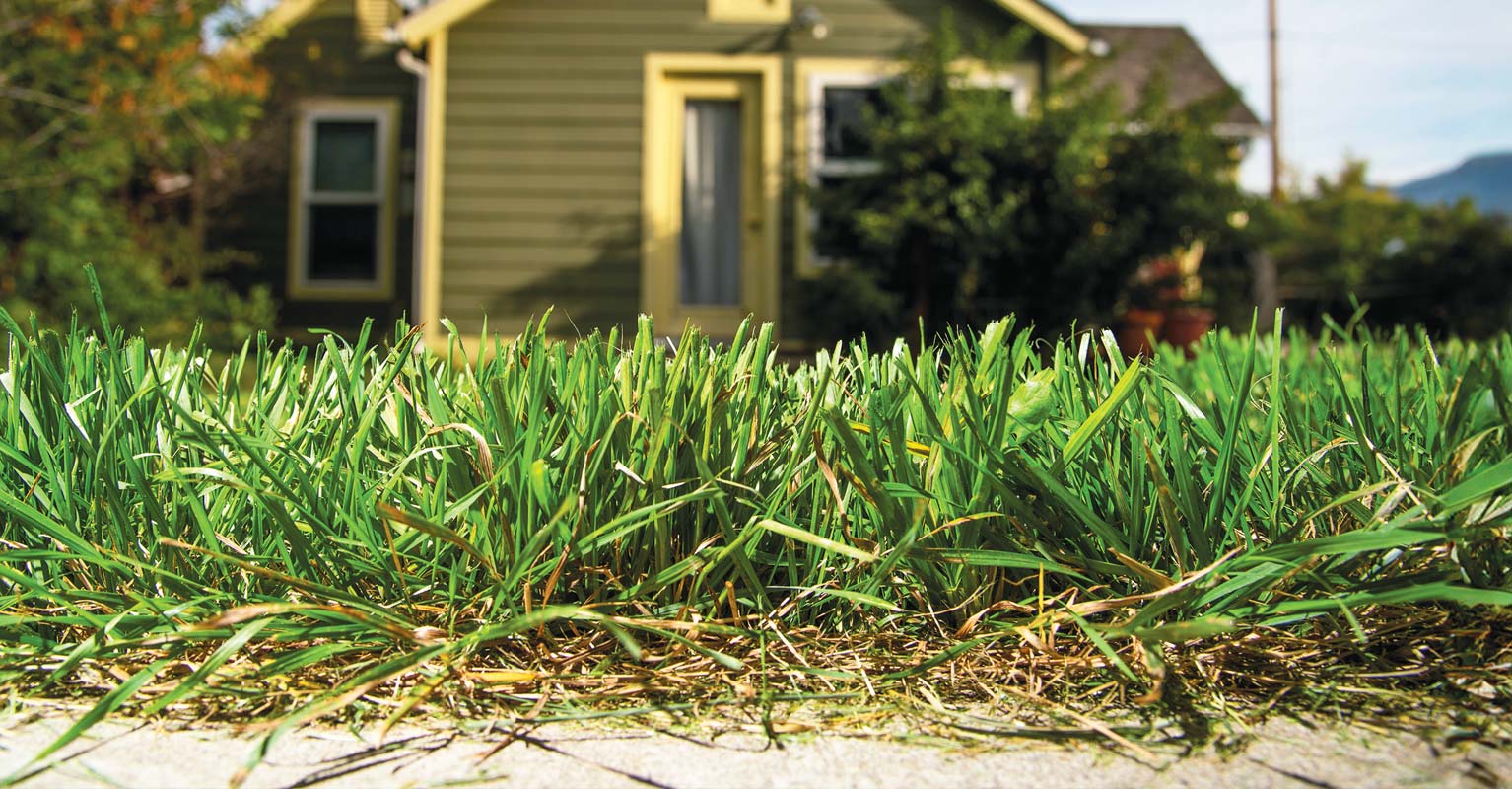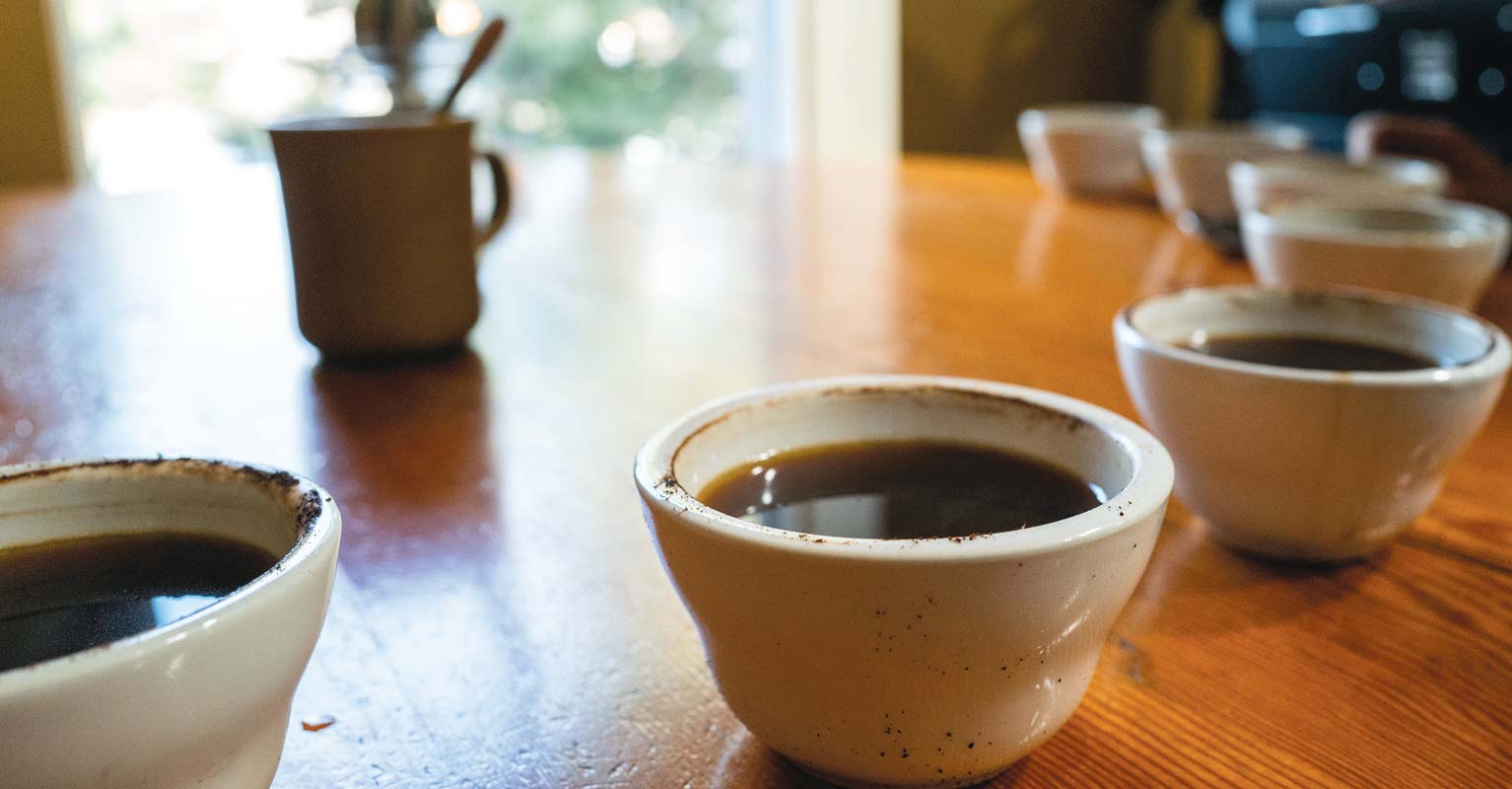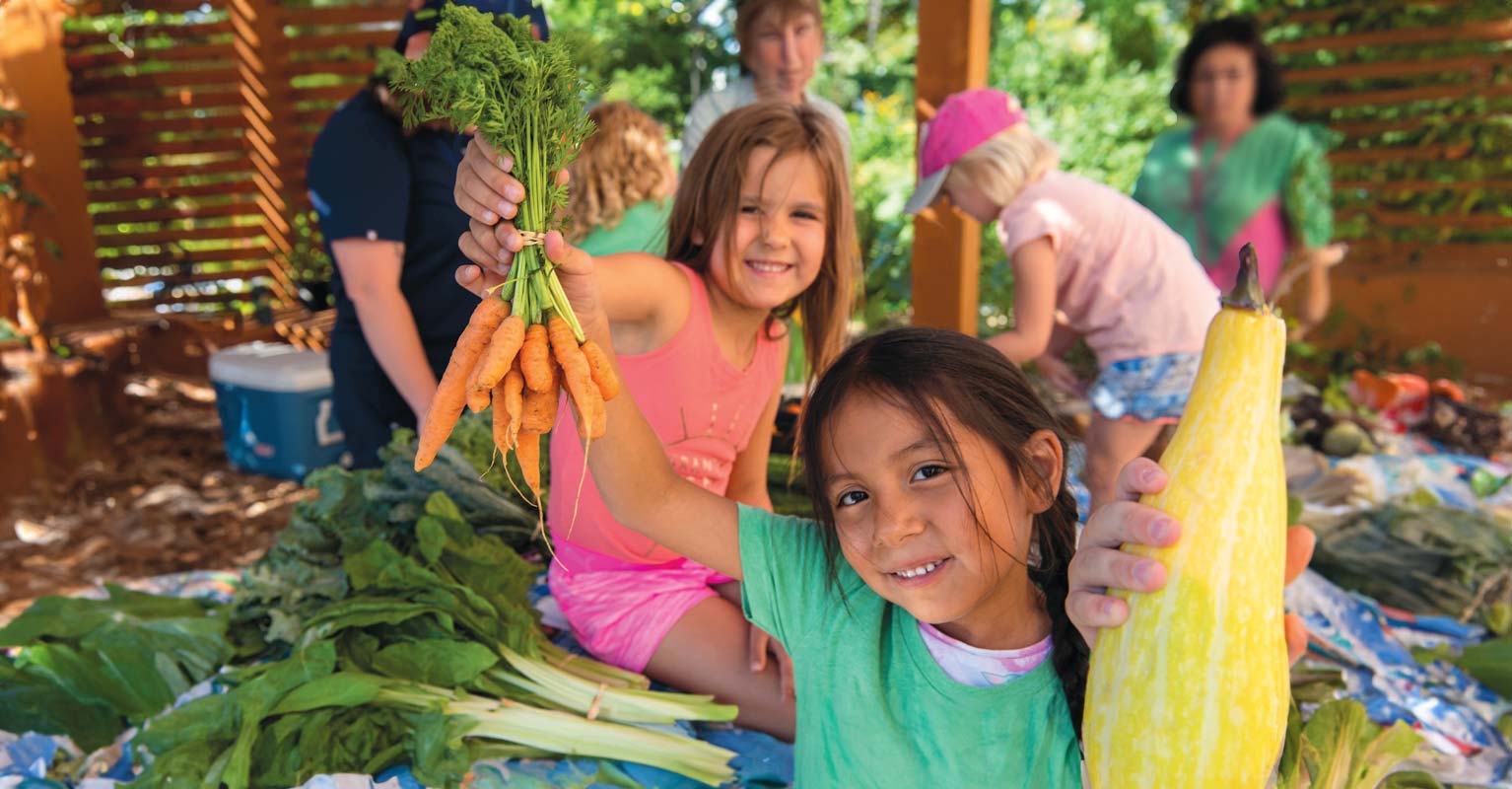Kareen Erbe (left) designs custom gardens and offers educational workshops on edible landscapes through her business, Broken Ground Permaculture
Montana’s cool nights and toasty midday temperatures make for a particularly challenging climate for growing backyard gardens. So, we’ve enlisted the help of permaculture expert Kareen Erbe of Broken Ground Permaculture for advice to beat the heat during the height of summer.
As a permaculture and garden designer, Erbe offers a variety of services and educational opportunities including custom garden design, online workshops, and in-person workshops for those looking to grow their own food, create edible landscapes, and build soil health.
TIPS FOR THIS YEAR
Mulch. Mulching is an essential component in minimizing the stressful swing of day-to-night temperatures by insulating the soil. It reduces stress by helping soil retain moisture, conserve water, and keep weeds at bay. Leaves are Erbe’s preferred mulch, given they are a widely available source of unsprayed organic matter. Grass clippings and straw will work as well if they have not been sprayed. Tip: Use wood mulches in perennial beds only, as they may be too high in carbon for annual vegetables. And remember to mulch potted plants too; they require more frequent watering than bedded plants and will greatly benefit from the help of some mulch.
Water Smarter. Keeping the soil moist will reduce stress on a plant’s root systems. Opt for a less frequent deep drench to encourage roots to dig deeper to find water. This will promote more substantial root systems that find access to consistent water already in the ground. Erbe says she does not water her garden more than three times a week during hot summer spells. Dip your finger in the soil: If it is damp up to your middle knuckle, there is sufficient moisture. Remember to water in the mornings or evenings when water won’t be lost to evaporation.
Shade Cloth. Shade cloth is an option for cool-weather crops such as peas, lettuce, and arugula. Applied over your plants with stakes, it can help cut sun exposure during the hottest of months. Erbe reminds us that some plants just don’t like the heat and may be done producing by midsummer. If you want a crop through the summer, consider staging your planting with heat-tolerant varieties.
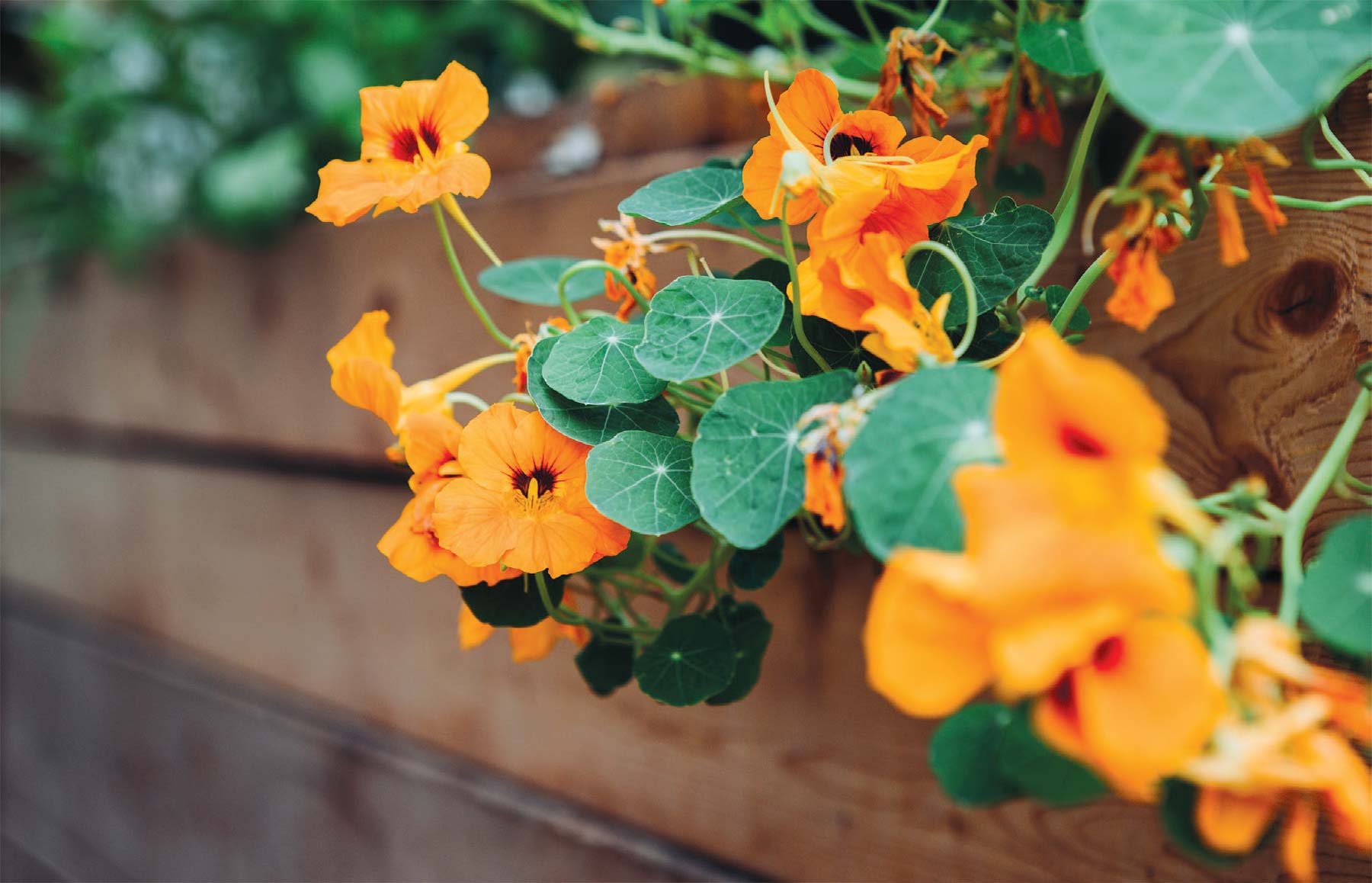
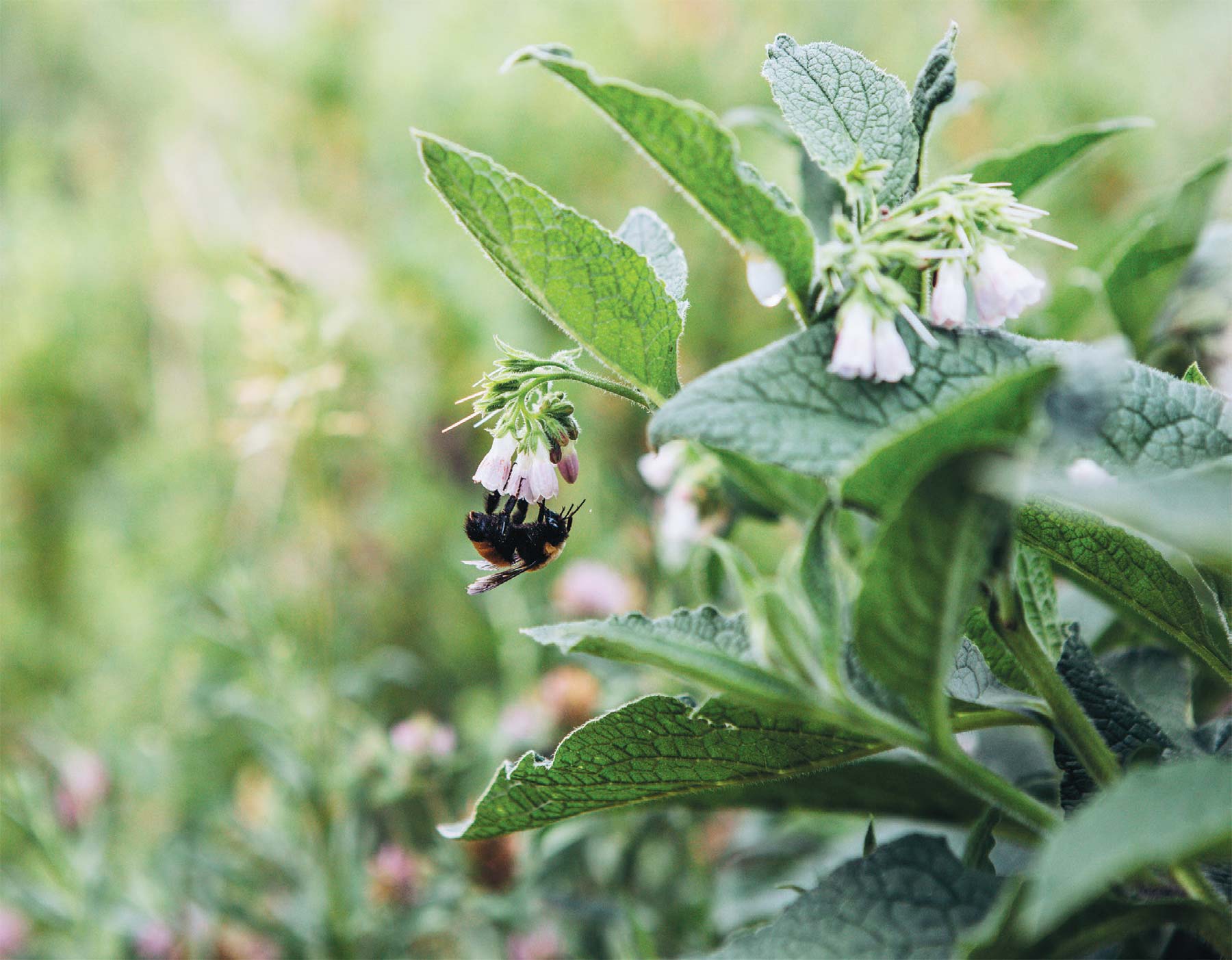
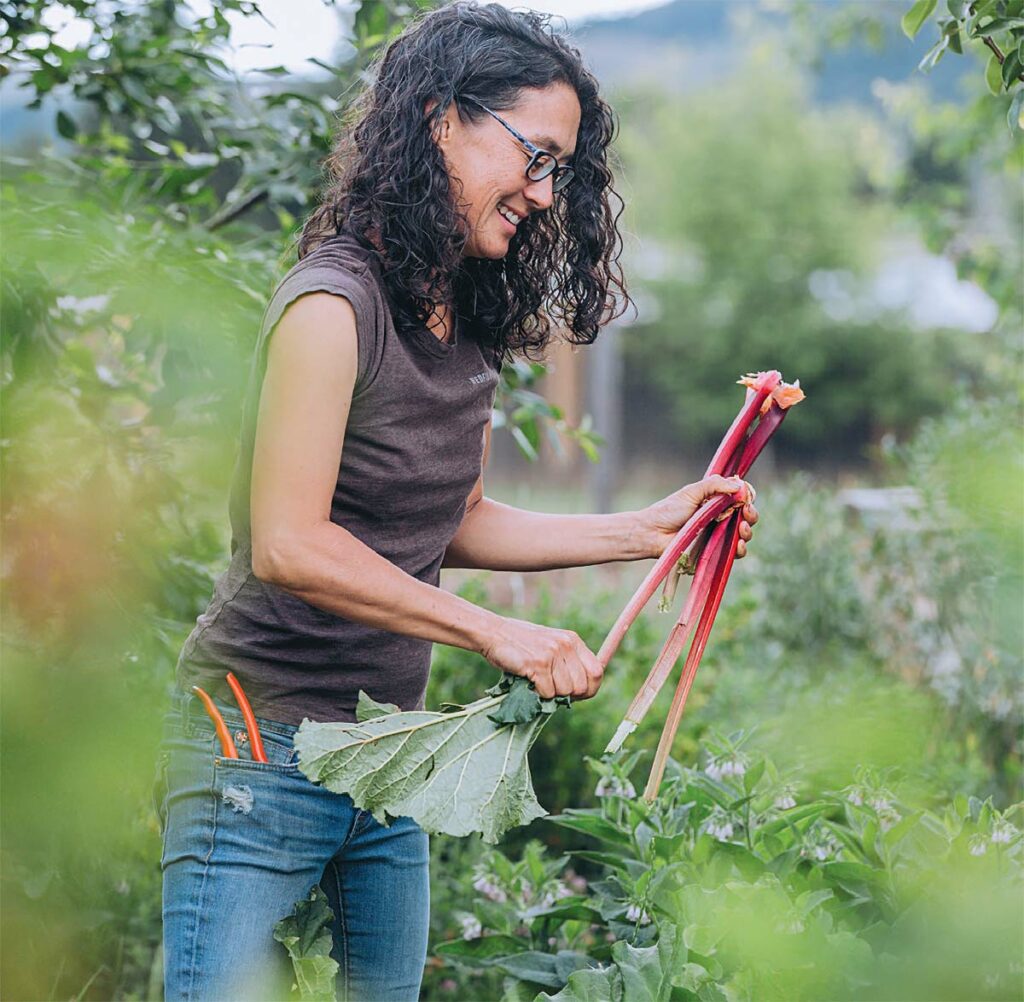
KAREEN’S PERENNIAL PICKS
Perennial broccoli
Good King Henry
Skirret
Lovage
Asparagus
Rhubarb
Sorrel
Jerusalem artichoke/Sunchoke
Horseradish
Walking onion
TIPS FOR THE FUTURE
Remember to pay close attention to your plants this year, and make notes to record changes for next. What areas of your garden are hottest? What areas dry out the most? With this in mind, dive into some planning for the future:
Build your soil. Healthy soil, rich in organic matter, will hold moisture better during hot months. Build from the top down by adding organic matter. Every year, add two to three inches of compost—and yes, this does include your mulch. Leaves, straw, and other garden debris that you use for mulch will slowly break down and help build rich soil.
Perennial Foods. Erbe is an advocate for perennial veggies. There are often hardier varieties with extensive root systems, making them drought resistant. Try fruit trees, berry bushes, and herbs.
Consider Placement. Each year, consult your notes about what worked and what didn’t. Consider the morning sun from the east and the afternoon sun from the west. Morning sun is substantially gentler on tender plants, with hot afternoon sun the most potent. Try planting more densely and companion planting, which will allow taller plants to shade shorter plants.
The most important tip, Erbe says, is not to panic. Plants may wilt in the heat of the day, but if they are bouncing back during the night, they will be fine. Pay attention to your moisture levels, mulch, and continue to build your soil health.


